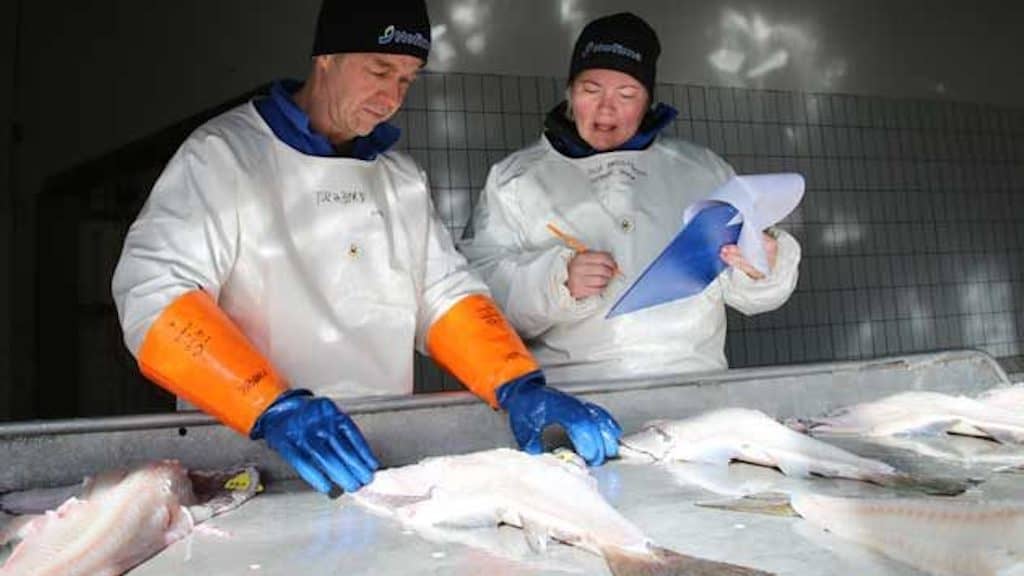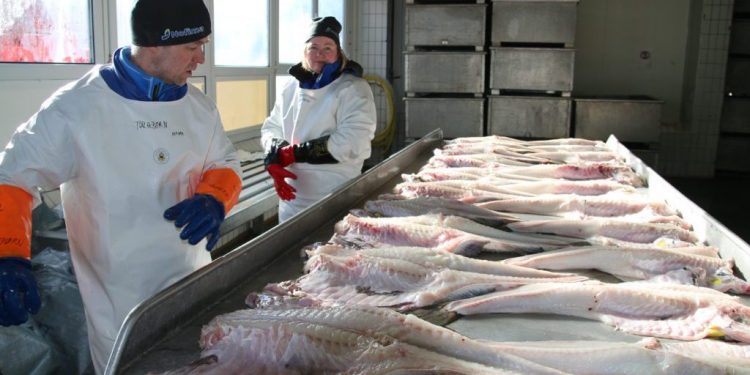After extensive trials involving catches from various vessels, Nofima scientists are in no doubt – cod weighing more than eight kilos caught using seine nets are more susceptible to catch-related injuries resulting in poorer quality.
The gears in most common use along the Norwegian coast are seine nets and gill nets, and seine nets is seen as a relatively gentle method as long as catches are modest, and this is the gear type that has been shown to be best suited for keeping fish alive on board.
There tends to be a significant variation in the size of cod caught with seine nets, which places great demands on both equipment and handling. A large cod weighing eight kilos may need to be handled differently to a two-kilo fish, in terms of how it should be brought on board, handling until delivery, and how it is handled once it has been landed.
Over time, fishing companies have experienced challenges regarding the quality of the largest cod. This was the reason why two fishing companies joined forces with Nofima to document the loss of quality and see if good solutions could be found.

Nofima has conducted several investigations into the quality of seine net catches. The trials have taken place over two seasons, involving catches of different sizes and from different vessels, which have handled the fish in slightly different ways. The results show a clear correlation.
‘Large cod are generally of poorer quality than smaller cod, regardless of how the vessel is rigged,’ said scientist Torbjørn Tobiassen.
The larger the fish, the worse the injuries. The recurring problem is that the big fish come out of the water with a ruptured swim bladder, a result of being brought up quickly from the depths where the water pressure is high. When the swim bladder ruptures, internal bleeding occurs that often produces discoloured loins. Smaller fish seem to tolerate this better.
Large cod also suffer injuries when they are transferred through pipes and pumps that are not designed for fish of this size. During the project, the scientists have shown that pumping when using unfavourable tube diameters can break the spines of the largest fish.
‘A relatively high proportion of cod over eight kilograms had internal injuries, which were not necessarily visible on the outside. Such injuries pose major challenges for the fishing industry,’ Torbjørn Tobiassen said.
This problem is an important one to solve for every aspect of the industry participating in the project.
‘We don’t want to deliver injured fish to our customers. It is a financial burden that large fish cannot be used for the products that generate the most money, and we get a lower yield from the raw material. If the quality can be improved, it will mean a lot for our production,’ said Terje Sørensen of fish producer Brødrene Karlsen.
When the cod is delivered, it is processed into various fish products. Much of the fish is sold gutted, with or without head, and it is not necessarily that easy to identify whether the fish is damaged.
Cod that cannot be used as planned due to blood spots and other injuries, for example, salted cod or clipfish, represents a significant cost for the fishing companies.
‘It is disheartening to receive feedback that the fish we deliver have injuries that lead to downgrading. We want to resolve these challenges and deliver fish of the highest possible quality. It has therefore been positive to participate in this project in order to get new input regarding improvements to the equipment on board, but also in terms of the catch process itself,’ said Rune Sand, skipper of seine netter Fortuna.
Both scientists and industry figures have expectations from the next phase of the project.
‘We have now documented the injuries in the fish. In the further work, we will continue to test different methods to see if anything can be done to raise the quality of the larger fish,’ Torbjørn Tobiassen said.
It is likely that most of the damage occurs when the fish are caught. Trials involving towing speed and haul time are planned ahead of next season, and the scientists will also study the effect of codend releasers which give the fish more space in the net. The trials will be carried out in close collaboration with several vessels.
In this further work, the scientists will also map what happens to the quality when the fish are pumped on board from the net, and when the entire codend is lifted on board. In addition, the quality during storage on board in the hold will be further investigated.









